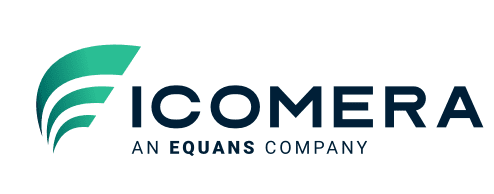Technology consideration starts at the vehicle; Improve operational efficiency and customer satisfaction with an integrated onboard connectivity platform.
Transit agencies and private operators around the world strive every day to operate efficiently and provide their customers with an exceptional experience. From relatively simple bus tracking to sophisticated systems that adapt to passenger demands, technology in any form is meaningful to improve the convenience and efficiency of our public transportation systems.
In transit, often technology decisions start at the bus or vehicle. I have worked with numerous transportation operators that have four or more ITS systems on their buses. These systems are loosely integrated, separately maintained and virtually impossible to update to keep pace with technological advancements. Furthermore, the bus procurement process gets complicated and pricey. Indeed, I have seen many bus procurements get delayed due to inadequate coordination between the various vendors of the onboard systems. In some cases, buses are shipped from the manufacturer without some of these systems only to be retrofitted onsite costing the agency or operator time and money.
What onboard technology trends are leading in operational efficiency?
Public transit is finally adopting the concept of standard integrated solutions that can interoperate software defined solutions rather than hardware ones. This shift has been sponsored and led by organizations like the American Public Transportation Association (APTA) and the International Association of Public Transport (UITP). One example is ITxPT (IT for Public Transport), a non-profit organization dedicated to the development of open and interoperable standards for public transit IT systems.
Even though initiatives like ITxPT are being adopted as industry standards by transit agencies, unfortunately they have yet to reach a maturity suitable for wide scale deployment. Nonetheless, agencies and operators should be proactive in their technology planning and prepare and lay the foundation for unified, integrated, and interoperable onboard technology.
Where to start with an onboard technology roadmap?
- Limit the number of onboard hardware platforms
Consolidation of onboard hardware systems into one or two is possible today. Ensure the platform support for third-party software systems. You do not need a separate box for CAD/AVL, fare collection, passenger information, video surveillance systems and an onboard router. They can all reside on one platform as software defined solutions.
- Consider and demand open architecture and systems interoperability
When choosing onboard systems, it is critical to choose systems that are built on open interfaces (e.g.: ITxPT, Open Transit Initiative). In the mature markets with a high penetration rate, a clear trend is the increased demand for ITxPT labeled ITS solutions compatible with third-party systems. Doing so will lessen the initial integration effort and would allow for easy upgrade and replacement. Open and interoperable systems are a critical foundation of Mobility as a Service (MaaS) and are identified by Intelligent Transport as a key technological trend in urban mobility: “…we will continue to move toward open platforms and data to drive technology-enabled mobility services”.
- Eliminate functional duplicity
Technology has advanced to where one system can perform the functions of two or more systems. For example, there is no need to have a separate digital video surveillance and traditional sensor-based APC systems. With today’s analytics, surveillance systems can exceed Automatic Passenger Counters (APC) systems in functions and accuracy and do a better job at decerning between adults, children, and wheelchair users, etc. Likewise, systems like vehicle health, driver behavior, event recorder, could all be consolidated under one platform. Furthermore, you do not need multiple systems for Automated Voice Annunciation (ADA), infotainment and onboard passenger entertainment. One system can do all three.
What are the benefits of reducing the onboard footprint?
If you can reduce your onboard equipment footprint and deploy converged and interoperable systems, you should expect the following benefits:
- Faster deployments and implementation: Often project delays are due to the systems integration. Interoperability based on open APIs and standards will significantly reduce the integration effort.
- Avoidance of premature obsolescence: A resilient and open onboard platform allows for the easy introduction of new systems and the update/upgrade of existing systems. Often, this can be as easy as a new software deployment.
- Lower maintenance costs: If you can eliminate and consolidate $20K to $40K of your onboard equipment that on its own will lead to an average saving of $2K or more per bus in hardware maintenance costs alone without considering the labor associated with the preventive and reactive maintenance associated with this equipment.
- Easier and simpler technology refresh: When the onboard equipment reaches the end of its useful lifetime, you will only need to replace one or two pieces of equipment rather than four or five and you may not even need to replace any wiring and harnesses.
- Increased efficiencies: Transportation solutions that are able to resolve interoperability issues amongst all various stakeholders will increase transportation efficiencies and reduce costs.
- Avoidance of vendor lock-in: With systems built on open standards, vendor lock-in is a thing of the past. Here, an opportunity exists to replace old analogue solutions into IP as part of digitalization.
How I’m playing my part
My role at Icomera allows me to work with transit agencies and passenger coach operators across North America designing systems and solutions to improve efficiency and the passenger experience. Applying Icomera’s philosophy of being our customers’ technology partner and aspiring to earn their trust, I apply the principals listed above to the solution’s design and technology decisions.
We hope you will join us in building a brighter, more connected, and interoperable future in transportation.


